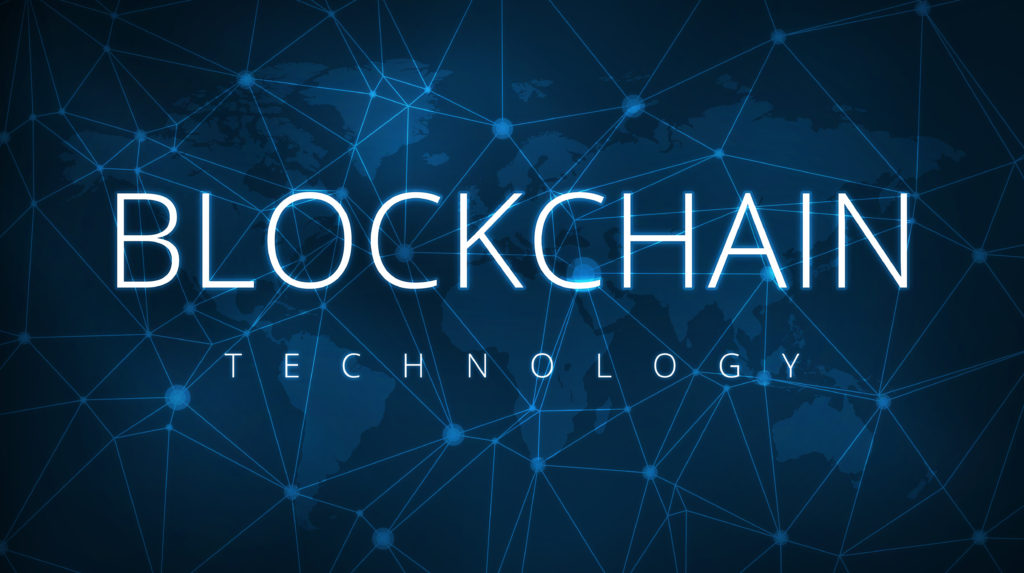“Things” have been around much longer than the Internet or Blockchain. The term “Internet of Things”, however, seems to have emerged around 1999 [1], [2], and gained more widespread recognition with the 2005 ITU report [3] (which seemed largely concerned with RFID technologies). In 2010, the IoT application domains included transportation and logistics, healthcare, smart environments, personal and social, and robot taxis, smart cities, and virtual reality were considered “futuristic”; while data authentication, data integrity, privacy, and data forgetting were considered open research issues [4]. IoT was added to the 2011 Gartner Hype Cycle, and hit the peak of inflated expectations in 2014, based on embedded sensors, image recognition, and near-field payment technologies. Early standardization efforts on IoT were primarily focused on optimized communication technologies (e.g. [5]). Google Glass was released in 2013 triggering popular interest in Augmented Reality and Virtual Reality, and Amazon released the Echo voice assistant in 2014. Around this time trust management aspects of IoT started to receive more attention [6] as did the intersection between IoT and social networks [7]. IoT Architectures in 2015 were mainly layer-oriented, separating sensing/ perception from communication and (centralized) processing [8], and security threats were also categorized by these layers[9]. By 2016, IoT device deployments we sufficiently large to form an attractive target for malware attacks (e.g., Mirai malware) and Blockchain started to come into the IoT conversation [10]. Blockchain capabilities like immutability, transparency, auditability, data encryption, and operational resilience have been proposed to solve many architectural shortcomings of early IoT systems [11].

IoT architectures seem to be adopting blockchains to leverage advantages from decentralization, security/ trust models and enablement of new business models providing greater user control of the IoT data [12], [13]. Centralized IoT architectures have enabled users to surrender their data to others in exchange for IoT services; blockchain technologies enable more nuanced controls on data usage and offer possibilities of commercial microtransactions thus enabling new business models. Existing IoT business models have been analyzed across multiple dimensions (e.g. [14]), but the impact of additional blockchain capabilities was not considered. With blockchains’ roots in cryptocurrencies, they can also be used to facilitate microtransactions and other trading activities in the IoT applications (e.g., smart-grid energy trading & settlement [15]). IoT architectures relying on centralized servers are vulnerable to failures and Denial of service attacks on a single point. IoT architectures are characterized by massive quantities of nodes, with the law of large numbers ensuring that some portion of the nodes is impacted by limited or intermittent connectivity, power or other faults. Blockchains based on redundant peer-peer infrastructure provide some degree of resiliency in the face of failure. Centralized IoT architectures rely on trusting a third party to handle the data, and typically do not support assurances against the life cycle of data integrity (e.g. data tampering, deletion or provenance). Blockchains can provide some assurances regarding data integrity, and blockchain consensus mechanisms can provide assurances of data provenance even amongst untrusting parties, and by distributing data over a peer-peer network provide alternate mechanisms for establishing trust in the IoT ecosystem [16]. Historically, centralized IoT architectures have provided users with only limited knowledge or control over how their data may be used and by whom. Blockchains and smart contracts can provide constraints on operations permitted on the data in the blockchain. Massive IoT deployments in centralized architectures imply substantial costs for centralized infrastructure support; in contrast, distributed peer-peer blockchain IoT architectures have no centralized servers. An IoT ecosystem has numerous vulnerabilities concerning confidentiality, privacy, and data integrity. With its cryptographic characteristics, blockchain can help in addressing security requirements in IoT [17] ([18] provides a SWOT analysis of blockchain as a mechanism to improve the security of IoTs). [19] proposed a blockchain architecture for IoT for improved privacy by distributing the data and placing it under the control of the user. [20] proposed a design for the tamper-resistant gathering, processing, and exchange of IoT sensor data (car mileage) that was intended to be scalable, efficient, and privacy-preserving. [21] prototyped a blockchain IoT leveraging the immutability properties of blockchains to preserve evidence for use in law enforcement and insurance cases. Whether viewed from the perspective of adding blockchain features to IoT, or including IoT data flows in blockchains, the integration trend of these technologies is expected to continue.
The IoT encompasses a broad range of sensors, systems, and services that tend to be optimized for (or fragmented into) specific applications. [22] provides an overview of the scope of IoT across the perspectives of multiple taxonomies to identify the main dimensions used to characterize IoT systems. Most of the literature focused on the IoT “things”, their communication patterns and to a lesser extent, the data made available by the IoT system; complete treatments of all the potential elements of IoT systems or all the quality dimensions of IoT systems have typically not been provided. Given the breadth of IoT, not every IoT deployment requires a blockchain – IoT applications with multiple independent, interacting entities that do not have a shared trusted authority are more suitable for blockchains [23]. The scale, connectivity and transaction patterns of IoT architectures are not the same as cryptocurrency applications that blockchains were initially deployed in. Blockchains designed for other purposes may not have the inherent characteristics required for IoT [24]. IoT devices are typically resource-constrained (e.g. RFIDs have no computational elements), and blockchains involve computation heavy cryptographic functions; blockchains have, however, been demonstrated in the context resource-limited computing nodes such as the Raspberry Pi [25]. Blockchain also appears to be adopting IoT as a key use case, with increasing numbers of publications focused on the topic [26]. While blockchains and smart contracts can provide interesting features to IoT architectures, they may need optimization for the IoT context, and don’t necessarily address all of the emerging IoT requirements in areas such as privacy. With billions of IoT devices already deployed, existing IoT architectures may need to be adapted to support blockchain capabilities. Developers of new IoT architectures should consider whether to include blockchain capabilities. While new blockchain technologies optimized for IoT are emerging, existing blockchain deployments may also need to consider the impacts of IoT data flows on their infrastructure (e.g., address space consumption, transaction performance, etc.). Smart contracts may provide a path to ease the integration of IoT data on blockchains while enabling new capabilities (e.g. control loops or transactions triggered by IoT sensor data).
If you are looking for a book that provides a detailed overview of the legal implications of blockchain technology and smart contracts, then “Blockchains, Smart Contracts, and the Law” is the perfect choice for you. This book is written clearly and concisely, making it easy to understand even for those who are new to the topic.
References
[1] K. Ashton, “That ‘Internet of Things’ Thing”, RFID Journal, June 2009
[2] N. Gershenfeld, “When things start to think”, Henry Holt & Co, 1999. ISBN 0805058745
[3] ITU “ITU Internet Reports 2005” The Internet of Things”, 2005
[4] L. Atzori, et. al., “The internet of things: A survey.” Computer networks 54.15 (2010): 2787-2805.
[5] I. Ishaq, et. al., “IETF standardization in the field of the internet of things (IoT): a survey.” Journal of Sensor and Actuator Networks 2.2 (2013): 235-287.
[6] Z. Yan, et. al., “A survey on trust management for Internet of Things.” Journal of network and computer applications 42 (2014): 120-134.
[7] A. Ortiz, et. al., “The cluster between internet of things and social networks: Review and research challenges.” IEEE Internet of Things Journal 1.3 (2014): 206-215.
[8] S. Madakam, et. al., “Internet of Things (IoT): A literature review.” Journal of Computer and Communications 3.05 (2015): 164.
[9] E. Leloglu, “A review of security concerns in Internet of Things.” Journal of Computer and Communications 5.1 (2016): 121-136.
[10] M. Conoscenti, et. al., “Blockchain for the Internet of Things: A systematic literature review.” 2016 IEEE/ACS 13th Int’l Conf. of Computer Systems and Applications (AICCSA). IEEE, 2016.
[11] A. Panarello, et. al., “Blockchain and iot integration: A systematic survey.” Sensors 18.8 (2018): 2575.
[12] M. Ali, et. al. “Applications of blockchains in the Internet of Things: A comprehensive survey.” IEEE Communications Surveys & Tutorials 21.2 (2018): 1676-1717.
[13] R. Thakore, et al. “Blockchain-based IoT: A Survey.” Procedia Computer Science 155 (2019): 704-709.
[14] D. Hodapp, et. al., “Business Models for Internet of Things Platforms: Empirical Development of a Taxonomy and Archetypes.” AIS: 14th Int’l Conf. on Wirtschaftsinformatik, Feb. 24-27, 2019, Siegen, Germany
[15] M. Andoni, et. al., “Blockchain technology in the energy sector: A systematic review of challenges and opportunities.” Renewable and Sustainable Energy Reviews 100 (2019): 143-174.
[16] B. Yu, et. al. “IoTChain: Establishing trust in the internet of things ecosystem using blockchain.” IEEE Cloud Computing5.4 (2018): 12-23.
[17] M. Khan, et.al., “IoT security: Review, blockchain solutions, and open challenges.” Future Generation Computer Systems 82 (2018): 395-411.
[18] S. Moin, et. al. “Securing IoTs in distributed blockchain: Analysis, requirements and open issues.” Future Generation Computer Systems 100 (2019): 325-343.
[19] M. Ali, et.al., “IoT data privacy via blockchains and IPFS.” Proceedings of the Seventh International Conference on the Internet of Things. ACM, 2017.
[20] M. Chanson, et al. ,”Blockchain for the IoT: privacy-preserving protection of sensor data.” Journal of the Association for Information Systems 20.9 (2019): 10.
[21] D. Billard, et. al., “Digital Forensics and Privacy-by-Design: Example in a Blockchain-Based Dynamic Navigation System.” Annual Privacy Forum. Springer, Cham, 2019.
[22] F. Alkhabbas, et. al., “Characterizing Internet of Things Systems through Taxonomies: A Systematic Mapping Study.” Internet of Things7 (2019): 100084.
[23] N. El Ioini, et.al., “A decision framework for blockchain platforms for IoT and edge computing.” SCITEPRESS, 2018.
[24] R. Han, et.al., “Evaluating blockchains for iot.” 2018 9th IFIP International Conference on New Technologies, Mobility and Security (NTMS). IEEE, 2018.
[25] A. Reyna, et. al., “On blockchain and its integration with IoT. Challenges and opportunities.” Future Generation Computer Systems 88 (2018): 173-190.
[26] A. Firdaus, et al., “The rise of “blockchain”: bibliometric analysis of blockchain study.” Scientometrics 120.3 (2019): 1289-1331.




